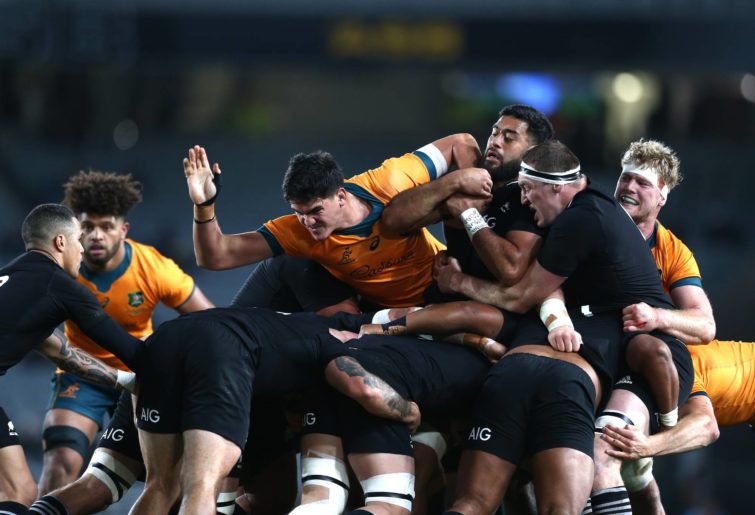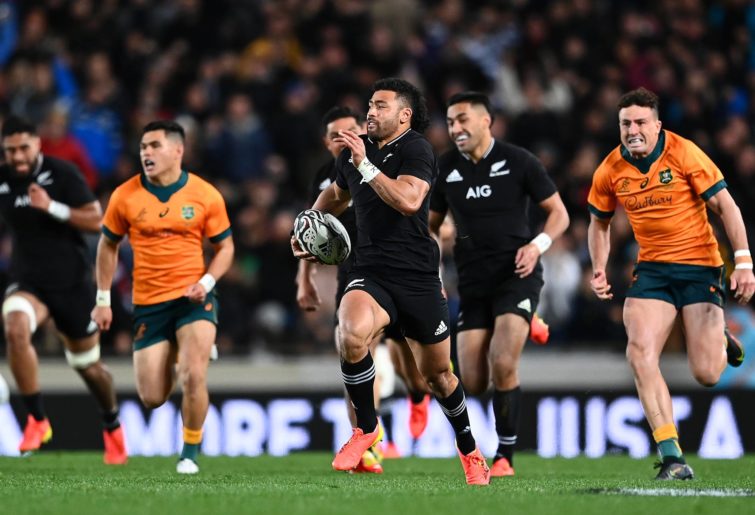George Nepia made his New Zealand debut 100 years ago, but was he really an All Black at just 16 years of age?
He was born 1905, 1904 or 1908 according to various reports, in Wairoa, Hawkes Bay, and is remembered as one of the great Māori players.
Opinion
It’s Saturday, August 14, 2021.
Eden Park, Auckland. Bledisloe Test number two of three. Game time: 41:45 (second half). Scoreboard: All Blacks 21, Wallabies 15.
Brendon Pickerill pulls out the yellow card and sends All Black 8 Ardie Savea off the field for ten minutes.
The Wallabies, at the time trailing by six points and having scored a converted try to end the first half, call a lineout five metres out from the All Black line.
The All Blacks appear vulnerable. Another score by the Wallabies may turn the tide of the Test match and the series in their favour, with the final Test to be played on home turf in Perth. The Wallabies will have an extra forward for the next 600 seconds of the match. All the momentum is with them. After 18 long years of Bledisloe famine, their time has come.
Or not.
Game time 41:58.
As Ardie Savea sits down to watch the game and have a well-earned drink, the ball is thrown into the lineout.
What follows is the most dominant period of play seen in Test match rugby since the previous week when it was the Wallabies who seized possession for most of the final 18 minutes of Bledisloe One, scoring 17 unanswered points in an already lost cause.
This time, however, it is the All Blacks who score ten unanswered points with one less player to all but seal the match and the series. Not finished, they then score two more converted tries within ten minutes while starving the Wallabies of possession.
Despite having one more player, Australia has possession of the ball in play for a total of 78 seconds or six per cent of the time in the 20.5 minutes after the All Blacks lose Savea to the bin.
The Wallabies have the ball in hand for a full 62 seconds over the next ten minutes.
The question that must be asked?
Did New Zealand suddenly play that much better when a man short or did the Wallabies suddenly switch off and lose focus?
Certainly, the All Blacks appeared to regain focus rather dramatically following the yellow card. With their backs to the wall, the All Blacks flicked a switch and once again took control of the match and the series. For the next ten minutes they circled the wagons, battened down the hatches, took the referee out of the equation and gave a masterclass on playing a man down.

(Photo by Getty Images)
During the sin-bin period, they had three lineout feeds and one scrum feed. The scrum feed occurred 60 seconds after the whistle was blown by Pickerill for an ever so slightly crooked throw. From the ensuing penalty it was 56 seconds from Pickerill’s whistle to Codie Taylor’s throw to the lineout, and another 45 seconds from when Hunter Paisami was tackled into touch until Taylor’s lineout throw. The third lineout saw another 64 seconds from the awarding of a penalty for a tackle in the air until Taylor’s throw-in.
It was from this overthrow that Australia finally regained the ball for its longest period – a full 36 seconds – only to have Sam Whitelock win a penalty that resulted in Damian McKenzie using up the final 90 seconds of Ardie’s siesta and score another three points.
Game time: 51:40. Scoreboard: All Blacks 31, Wallabies 15.
Ardie Savea returns to the field.
And in the game within the game, I noted that McKenzie managed to steal an extra metre when taking the kick, despite an Australian player walking forward after the penalty and rolling the ball back a metre, and then Pickerill commenting to the Wallabies that he had been making sure the penalty was taken from the correct mark. McKenzie’s penalty kick – while majestic – scraped over the bar by what looked like less than a metre.
Richie Mo’unga spent 103 seconds taking the conversion for Codie Taylor’s first try. Add another 25 seconds for the Wallabies to kick-off after the conversion, and the All Blacks had successfully used up almost half of their ten-minute sentence with little or no effort or disadvantage.
From here, the All Blacks continued their masterclass as the Wallabies became spectators for another ten-minute period.
The All Blacks earned four penalties and one free kick in the 20 minutes after Savea’s card, scored three converted tries and kicked one penalty. They used the generous Eden Park wind to kick deep for territory while a man down.

(Photo by Hannah Peters/Getty Images)
On the three occasions that the Wallabies had the ball in hand with Savea off, they kicked it back once, got tackled into touch once and were penalised for not releasing once. Following Savea’s return, and up until Codie Taylor’s second try, they also had the ball in hand only three times up until the 62nd minute. They managed to kick it away once (Kellaway), throw an intercepted cut-out pass (To’omua) and get penalised again for not releasing.
When looking at the flow of the game for this crucial 20-minute period, one must question the gap in rugby IQ between the two teams. If nothing else, it would appear that the All Blacks have more complete game management capability than the Wallabies. Should this scenario recur in the third Test or in any subsequent matches in TRC, the Wallabies must ensure a more positive outcome and learn from the masterclass they were given.
Unanswered questions for Roarers would have to include:
Did the referee make a bad call on the crucial uncontested lineout throw at the 42-minute mark?
Is Ardie Savea (the new All Black captain) that unimportant to the All Blacks?
Can Australia pick up the pieces of their Rugby Championship campaign?
Will Quade Cooper be called upon for Game 3?
We now know that this weekend’s starting players be significantly different for their respective teams. Will this lead to a significantly different outcome?
Bring on Game 3.